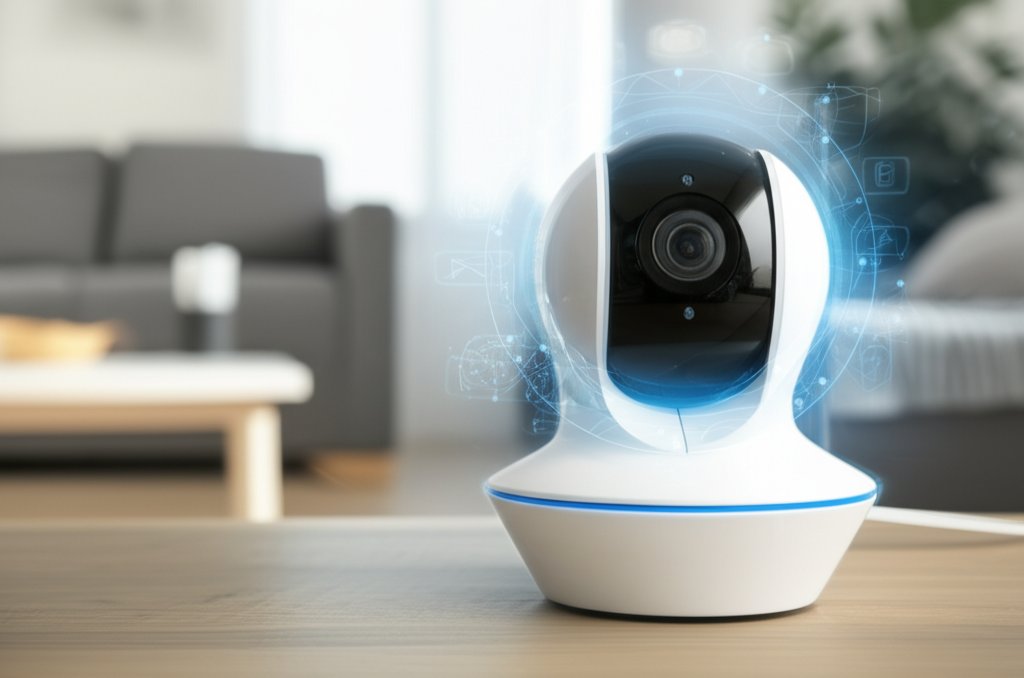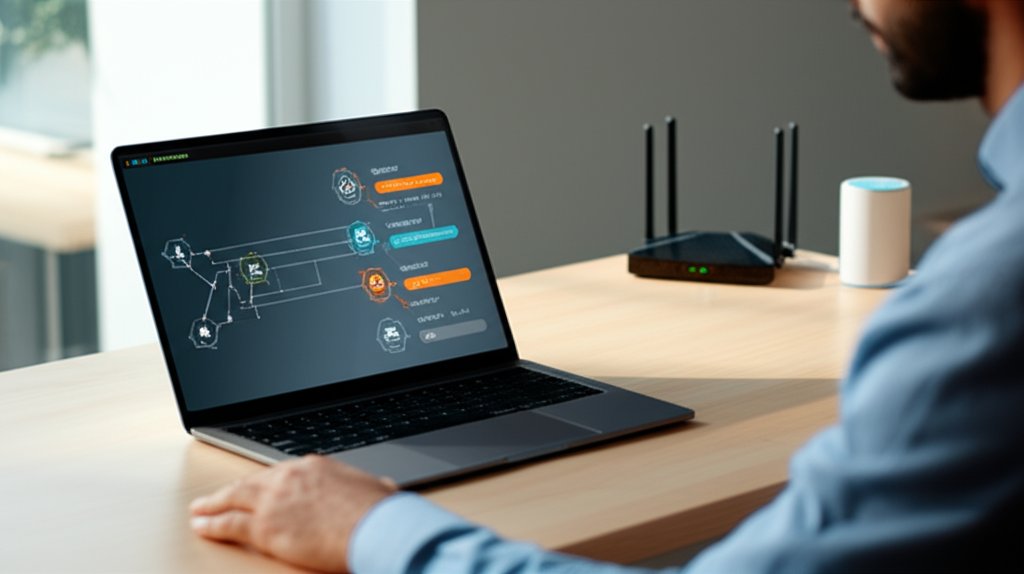Why Security Compliance Automation Projects Fail: Simple Fixes for Small Businesses & Everyday Users
The term “security compliance automation” often conjures images of effortless security, freeing up countless hours, slashing operational costs, and keeping your small business effortlessly aligned with ever-tightening data privacy and security regulations. The promise is compelling: ditch the manual checks and endless spreadsheets for a sleek, automated system that handles the heavy lifting.
Indeed, automating compliance is frequently touted as the silver bullet for robust security and avoiding hefty regulatory fines. However, as a security professional, I’ve seen a different reality: many of these projects stumble, falter, and sometimes fail outright, leaving businesses more frustrated and vulnerable than before. This raises critical questions: “If it’s so beneficial, why do so many security compliance automation projects fail?” And, more importantly, “How can you ensure your investment delivers tangible success?” This article will unpack the common pitfalls, and more crucially, arm you with practical, actionable strategies – the simple fixes – to empower you to take control of your digital security and achieve real, measurable success with automation.
Understanding Security Compliance Automation: Why It Matters for Your Small Business
At its core, security compliance automation harnesses technology to continuously monitor, assess, and report on your business’s adherence to specific security standards and regulatory requirements. Picture it as a tireless digital assistant, constantly verifying that you’re following essential rules – whether they’re broad regulations like GDPR, HIPAA, or PCI DSS, or your own internal data protection policies.
This isn’t a luxury reserved for large corporations with vast compliance departments. For small businesses, ignoring compliance automation is becoming an increasingly risky gamble. The regulatory landscape is expanding rapidly, and cyber threats are more sophisticated and pervasive than ever before. Failure to comply can result in devastating fines, irreparable reputational damage, and a significant erosion of customer trust. For a small operation, a single major data breach or a hefty fine could be catastrophic.
By intelligently automating aspects of your security compliance, you’re not just avoiding penalties; you’re actively protecting your valuable customer data, building stronger confidence with clients, and reclaiming precious time and resources that would otherwise be consumed by tedious manual checks.
Your Blueprint for Success: Simple Pillars of Compliance Automation
Navigating the complexities of compliance automation doesn’t have to be overwhelming. The secret to making it work for you, not against you, lies in a proactive, structured approach. This isn’t a “set it and forget it” solution. It demands thoughtful planning, empowering your team, optimizing existing processes, selecting appropriate tools, and committing to ongoing vigilance.
Our blueprint for success is built upon five core pillars, designed to simplify your journey:
- Plan Smart, Start Small: Define specific, achievable goals and streamline your manual processes before introducing automation.
- Empower Your Team: Involve employees early, provide practical, non-technical training, and proactively address the “human factor” of change.
- Choose the Right Tools: Select user-friendly, integrated, and scalable solutions that fit your business size and technical comfort level.
- Monitor & Adapt Continuously: Recognize that compliance is dynamic. Stay agile and be prepared to respond to evolving regulations and your operational environment.
- Know When to Get Expert Help: Don’t hesitate to consult cybersecurity or legal specialists for complex challenges or critical validations.
By focusing on these fundamental areas, you’re doing more than just implementing software; you’re actively constructing a resilient, adaptable, and robust compliance framework for your business’s future.
Implementation Roadmap: Simple Fixes for Lasting Compliance Success
Now, let’s translate those pillars into practical, step-by-step actions. These are your simple fixes to common automation pitfalls.
Fix 1: Build a Strong Foundation – Plan Smart and Start Small
Just as you wouldn’t build a house without a blueprint, don’t attempt to automate compliance without a clear, strategic plan. The common “just automate it” trap often leads to automating existing inefficiencies, turning a messy manual process into a frustrating automated one.
- Define Clear, Specific Goals: Before you even look at software, ask yourself: What exact problem am I trying to solve? Vague goals like “automate compliance” are a recipe for failure. Instead, aim for specifics. For a small e-commerce store, a clear goal might be “automate quarterly vulnerability scans for PCI DSS” or “streamline our privacy policy review process.” For a local consulting firm, it could be “ensure all new client contracts automatically include necessary data processing agreements (DPAs).”
- Simplify Before You Automate: Automation is a powerful accelerant, but it will accelerate good processes and bad ones equally. If your current manual workflow for, say, employee access reviews is disorganized, automating it will only make the disorganization happen faster. Take the time to untangle and optimize your manual processes first. Eliminate redundant steps, clearly define who is responsible for what, and fix any broken workflows. Analogy: Trying to pave a road riddled with potholes is far less effective than first filling the holes and leveling the surface.
- Start with High-Volume, Low-Risk Tasks (Quick Wins): Resist the urge to automate everything at once. Identify one or two repetitive, time-consuming tasks that are relatively straightforward and have lower associated risk. For instance, automating the collection of employee security awareness training completion certificates is a great starting point. Another could be setting up automated alerts for when a critical server is accessed outside of business hours. Successful small wins build confidence, demonstrate value, and provide invaluable lessons for tackling larger, more complex automation projects down the line.
Fix 2: Empower Your Team – The Human Factor in Automation
Even the most sophisticated automation tools are only as effective as the people who use them. Ignoring the “human factor” is a surefire way to sabotage your project before it even gets off the ground.
- Involve Employees Early and Clearly Communicate “Why”: Bring your team into the conversation from the very beginning. Explain why this change is happening and, crucially, how it will benefit them. For example, show how automation will free them from tedious, repetitive tasks (like chasing down forms for audit) allowing them to focus on more strategic, engaging work. Their intimate knowledge of current processes is invaluable for identifying bottlenecks and designing better automated workflows. Imagine a small office where the administrative assistant spends hours manually tracking vacation requests; automating this frees them for higher-value work.
- Provide Easy-to-Understand, Practical Training: Technical jargon is a barrier. Focus on practical, “how-to” training that shows employees exactly how to interact with the new tools and what it means for their daily responsibilities. Avoid lengthy, theoretical lectures. Think quick video tutorials (e.g., “How to review your daily security dashboard in 5 minutes”), simple cheat sheets, or hands-on workshops tailored to specific roles. For instance, show your marketing team how to quickly log a new client’s data consent within the new system.
- Address Trust Issues and Fears Proactively: Some employees might worry that automation will lead to job cuts or that the system will make mistakes they’ll be blamed for. Reassure them that automation is a tool to support and augment human capabilities, not replace them, especially for critical decision-making, interpretation of complex situations, or subjective tasks. Frame it as giving them superpowers, enhancing their productivity and enabling better security. Involve employees early, provide practical, non-technical training, and proactively address the “human factor” of change.
The market is saturated with compliance tools, but for small businesses, selecting the right fit is paramount. A wrong choice can lead to more headaches than the manual processes you’re trying to escape.
- Prioritize User-Friendly, “No-Code” Solutions: You likely don’t have a large IT department. Look for intuitive software that’s easy to set up, manage, and understand without requiring extensive technical expertise or coding skills. Many modern solutions offer graphical interfaces and predefined templates. Think of it like choosing accounting software: you want something that simplifies complex tasks, not complicates them further. A small retail business might need a compliance tool that simply integrates with their POS system and provides a green/red light status for PCI DSS.
- Ensure Seamless Integration with Existing Systems: Most small businesses use a variety of platforms – CRM, accounting, cloud storage, project management. Data “silos,” where information is trapped in disparate systems, are a major hurdle to effective automation. Your chosen compliance tool should seamlessly integrate with your existing ecosystem. Look for solutions with open APIs (Application Programming Interfaces) or built-in connectors that can pull and push data automatically. For example, if your HR system tracks employee onboarding, your compliance tool should ideally pull new user data to automatically assign initial security training.
- Focus on Scalability for Future Growth: Your business isn’t static, and neither are regulations. Choose a solution that can grow with you. You don’t want to invest time and money into a tool only to outgrow its capabilities in a year or two as your business expands or your compliance obligations become more complex. A scalable solution allows you to add more users, modules, or compliance frameworks as needed without a complete overhaul.
Fix 4: Monitor and Adapt Continuously – Staying Ahead of the Curve
The digital world and its associated regulations are constantly evolving. Adopting a “set it and forget it” mentality with compliance automation is a guaranteed path to failure and potential non-compliance.
- Implement Continuous Monitoring as a Cornerstone: Automation isn’t a one-time setup; it’s an ongoing process. Implement continuous monitoring to track your compliance posture in real-time. This means your system should be constantly checking for deviations from policy, security misconfigurations, or unusual activity. Set up automated alerts for any potential issues – for example, if an unauthorized user attempts to access sensitive data, or if a critical security patch is overdue on a server. Catching these issues immediately, before they escalate, is critical.
- Schedule Regular Reviews and Adjustments: Regulations change, your business processes evolve, and new threats emerge. Schedule frequent, perhaps quarterly or semi-annual, reviews of your automation processes. Are they still relevant? Do they need updating to reflect new laws (e.g., a new state privacy law), changes in your operations (e.g., new software adopted), or lessons learned from incidents? Treat your automation framework as a living document that requires regular maintenance.
Fix 5: Know When to Get Expert Help – Leveraging Specialists
While automation simplifies many tasks, it doesn’t eliminate the need for human expertise entirely. Knowing when to bring in specialists is a sign of smart security management, not a weakness.
- Recognize the Limits of Automation: Automation excels at repetitive, rule-based tasks. However, interpreting nuanced legal texts, making ethical judgments, or responding to highly unusual security incidents still requires human intelligence and experience. Understand what your tools can do and where human oversight remains critical.
- Consult Cybersecurity or Legal Professionals for Complex Challenges: For intricate regulations (like specific industry-specific compliance frameworks) or if you’re unsure about the correct interpretation of a rule, don’t hesitate to consult qualified cybersecurity or legal professionals. They can provide invaluable guidance, conduct independent audits, and help you correctly configure your automation for tricky scenarios, ensuring you’re not just “checking boxes” but truly securing your business. Think of them as experienced navigators for complex regulatory waters.
Case Studies: Seeing the Simple Fixes in Action
To truly understand the power of these simple fixes, let’s explore how real (albeit fictionalized) small businesses applied them to achieve compliance success.
Case Study 1: Chic Threads – The E-Commerce Boutique and PCI DSS
The Problem: “Chic Threads,” a thriving small online clothing store, faced significant challenges with PCI DSS compliance. Manual monthly vulnerability scans, tedious policy reviews, and inconsistent vulnerability assessments were time-consuming and often overlooked. Owner Sarah felt overwhelmed by the technical jargon and the constant risk of fines and credit card data breaches.
The Simple Fixes Applied: Recognizing the “Plan Smart, Start Small” principle, Sarah didn’t try to automate everything at once. She implemented a user-friendly compliance automation tool specifically designed for small e-commerce businesses. She started by automating quarterly vulnerability scans (a high-volume, low-risk task) and daily file integrity monitoring for her website. The tool provided simple, color-coded dashboards, automatically generated reports for audit readiness, and flagged issues in plain language. Crucially, applying “Empower Your Team,” she trained her small team on how to interpret alerts and assigned clear responsibilities for remediation, demystifying the process for them.
The Result: Within six months, Chic Threads dramatically reduced their audit preparation time by 70%. The automated system proactively caught a misconfigured firewall rule that would have exposed customer data, demonstrating the system’s immediate value and Sarah’s proactive security posture. Sarah reported feeling “in control and confident” about their PCI DSS standing, freeing her to focus more on growing her business instead of compliance anxieties.
Case Study 2: Buzz Marketing – The Local Agency and GDPR/CCPA
The Problem: “Buzz Marketing,” a small but growing agency, served clients across various regions, making GDPR and CCPA compliance a daunting task. Managing consent collection, data subject access requests (DSARs), and data retention policies manually through spreadsheets and email chains was chaotic, creating significant compliance gaps and potential legal exposure.
The Simple Fixes Applied: Buzz Marketing tackled this by embracing “Choose the Right Tools” and “Monitor & Adapt Continuously.” They adopted a GRC (Governance, Risk, Compliance) automation platform that specialized in data privacy management and offered user-friendly interfaces. They used it to automate consent collection directly through their website forms, streamline DSAR workflows, and automatically flag customer data that had exceeded its retention period. By “Ensuring Integration,” they connected it with their CRM and project management tools, ensuring all data touchpoints were accounted for. Their team received focused, practical training (Empower Your Team) on specific tasks relevant to their roles, eliminating confusion.
The Result: Buzz Marketing significantly improved their response time for DSARs, consistently meeting legal deadlines. They dramatically reduced the risk of data over-retention, saving storage costs and mitigating privacy risks. Their clients, increasingly concerned about data privacy, recognized and appreciated the agency’s robust and transparent compliance framework, which ultimately became a key differentiator that helped Buzz Marketing win new business.
Metrics That Matter: Proving Your Automation Is Working
How do you quantify the success of your security compliance automation? Measuring key performance indicators (KPIs) is crucial to demonstrate the tangible benefits and ensure your investment is paying off. These metrics provide concrete evidence that your simple fixes are having a real impact:
- Reduced Audit Preparation Time: This is one of the most immediate and tangible benefits. Track how many hours or days you save preparing for an audit compared to your manual process. For example, if it used to take a week to gather evidence for an annual security review and now it takes a day, that’s significant ROI.
- Number of Compliance Deviations Detected and Resolved: Monitor how many potential policy violations, security misconfigurations, or non-compliant actions your automation system proactively identifies. More importantly, track how quickly these issues are remediated. A higher detection rate and rapid resolution directly translate to a more secure and compliant environment, significantly reducing risk.
- Employee Security Training Completion Rates: If your automation platform includes or tracks security awareness training, monitor completion rates. A well-informed team is your first line of defense, and high completion rates indicate effective “Empower Your Team” strategies.
- Quantifiable Cost Savings: Go beyond just avoiding fines. Calculate the reduction in labor hours spent on manual compliance tasks, the decreased likelihood of data breaches (and their associated costs), and even potential reductions in cyber insurance premiums due to a stronger security posture.
- Timeliness of Policy Reviews and Updates: Automation can help you track when internal policies were last reviewed and when they are due for an update to align with new regulations or business changes. Ensuring policies are current is a critical, often overlooked, aspect of continuous compliance.
By regularly reviewing these metrics, you can clearly demonstrate the return on investment (ROI) of your automation efforts, justify further improvements, and make informed adjustments to your security strategy.
Common Pitfalls and Your Simple Fixes to Sidestep Them
Even with the best intentions, security compliance automation projects can hit roadblocks. Understanding these common pitfalls and knowing how to proactively address them with simple, effective fixes is key to your success.
Pitfall 1: The “Just Automate It” Trap – Lack of Clear Goals
The Problem: Many businesses jump into automation without a precise understanding of what they’re trying to achieve. This often leads to implementing a complex tool that doesn’t quite fit their actual needs, causing frustration and wasted resources. It’s like buying an expensive, multi-purpose tool when you only need a specific screwdriver.
The Simple Fix: As discussed in “Plan Smart, Start Small,” define specific, measurable goals before you begin. Instead of “automate security,” aim for “automate monthly vulnerability scans for our website” or “ensure all new employees complete GDPR awareness training within 7 days of onboarding.” Start with one or two compliance areas initially rather than attempting a “big bang” overhaul. This focused approach ensures your automation efforts are targeted and effective.
Pitfall 2: Ignoring the Human Factor – Resistance and Insufficient Training
The Problem: People are naturally resistant to change, especially when new technology feels threatening or unfamiliar. If employees don’t understand the “why” behind automation or aren’t adequately trained on “how” to use the new system, they’ll either ignore it, bypass it, or use it incorrectly, leading to errors and compliance gaps. This can undermine even the most technically sound automation.
The Simple Fix: This is where “Empower Your Team” comes into play. Involve your team early in the process, explain the benefits to them personally (e.g., less manual drudgery), and provide clear, practical, hands-on training tailored to their specific roles. Address their concerns directly and reassure them that automation is a supportive tool, not a replacement for their critical thinking and oversight. Remember, human judgment remains indispensable for interpreting nuanced situations.
The Problem: Small businesses often have data spread across various, disconnected systems (e.g., CRM, accounting, cloud storage). These “data silos” prevent comprehensive automation. Choosing a tool that doesn’t integrate well with your existing ecosystem, or underestimating the time and technical skill required for implementation, can quickly derail your project and lead to more manual workarounds.
The Simple Fix: Refer back to “Choose the Right Tools.” Prioritize solutions known for their user-friendliness (think intuitive dashboards, “no-code” options) and robust integration capabilities. Before committing, ask for demonstrations and clarify integration processes with your current software. Be realistic about the resources (time, budget, and minimal technical expertise) you’ll need for setup and ongoing management. Many modern tools are designed with small businesses in mind, offering pre-built connectors to popular platforms.
Pitfall 4: The Ever-Changing Rulebook – Not Adapting to Regulatory Changes
The Problem: The compliance landscape is a moving target. New laws, revised industry standards, and evolving best practices emerge constantly. A “set it and forget it” automation setup will quickly become outdated, leaving your business exposed to new risks and potential non-compliance, even if you were initially compliant.
The Simple Fix: Embrace “Monitor & Adapt Continuously.” Your automation strategy must include a robust mechanism for regular review and adjustment of your automated processes. Set up reminders for quarterly or semi-annual checks. Ideally, your chosen automation tool should have features that help you track regulatory updates or provide alerts for new requirements. Treat compliance automation as an ongoing journey, not a destination.
Pitfall 5: “Set It and Forget It” – Insufficient Testing and No Ongoing Monitoring
The Problem: Automation isn’t magic; it needs careful validation. Without thorough initial testing and continuous monitoring, you might operate under the false assumption that you’re compliant, only to discover a critical failure during an audit or, worse, after a security incident. An automated system that isn’t checked is an untrusted system.
The Simple Fix: Implement robust testing protocols during setup, and then establish continuous monitoring. Your automated system should be constantly verifying compliance and flagging any deviations in real-time. Think of it like a smoke detector: it’s not enough to install it; you need to test it regularly to ensure it works. Set up alerts for any anomalies or potential issues so you can address them proactively, before they become significant problems.
What Not to Automate: Preserving Human Judgment
While automation offers immense power, it’s crucial to understand its limitations, especially for small businesses with finite resources. Not every task should be automated. High-risk, sensitive decision-making that requires nuanced interpretation, ethical judgment, or empathy often benefits significantly from human oversight. This includes:
- Interpreting Complex Legal Nuances: Automation can flag potential issues, but a legal professional is best equipped to interpret the precise meaning of a new regulation for your specific business context.
- Making Ethical Judgments: Decisions involving subjective morality or sensitive customer situations require human empathy and discretion.
- Handling Unique Customer Support Scenarios: Especially those related to privacy or data breaches, where a personalized and empathetic response is critical.
Your strategy should be to automate the repetitive, data-gathering, and reporting aspects of compliance, freeing your team to focus their human intellect on these higher-level, interpretive judgments. This strategic blend ensures efficiency without sacrificing critical oversight.
The Big Payoff: Realizing the Benefits of Successful Automation
When security compliance automation is implemented thoughtfully, leveraging the simple fixes we’ve discussed, the dividends are substantial and transformative for your business:
- Significant Time and Cost Savings: By automating repetitive, manual tasks, you free up valuable employee time, allowing them to focus on core business activities. This directly translates to reduced operational costs and, crucially, helps you avoid potentially crippling fines from non-compliance.
- Minimizing Human Error: Automated processes are inherently more consistent and less susceptible to the oversights and mistakes that can creep into manual efforts, leading to a more reliable compliance posture.
- Proactive Security & Risk Reduction: With continuous monitoring and real-time insights, you can detect and address compliance issues or security vulnerabilities before they escalate into major problems. This fosters a truly proactive security posture, strengthening your overall defenses.
- Streamlined and Stress-Free Audits: Imagine having all your compliance evidence, reports, and audit trails readily available at your fingertips, perfectly organized by your automated system. This makes audits far less stressful, more efficient, and helps you demonstrate due diligence with confidence.
- Enhanced Security and Unwavering Trust: Ultimately, a robust and demonstrable compliance framework builds a more secure environment for your sensitive data. This transparency and reliability foster greater confidence and trust with your customers, partners, and stakeholders, serving as a competitive advantage.
Conclusion: Your Path to Mastering Compliance Automation
Security compliance automation offers immense, transformative potential for small businesses and even individual users navigating complex digital security requirements. It’s not about replacing human ingenuity; it’s about empowering your team, bolstering your defenses, and providing peace of mind in an increasingly intricate digital world.
The key to unlocking this potential and truly making automation work for you lies in a disciplined approach: thoughtful planning, actively involving and training your people, strategically choosing user-friendly tools, and maintaining a vigilant, adaptable mindset.
Don’t let the compelling promise of automation turn into a frustrating pitfall. By internalizing why projects sometimes fail and by diligently implementing these simple yet powerful strategies, you can ensure your compliance automation efforts are a resounding success. Take control of your digital security, safeguard your business, and achieve lasting peace of mind.
Start implementing these strategies today and actively track your results. Your success story is waiting to be written.









